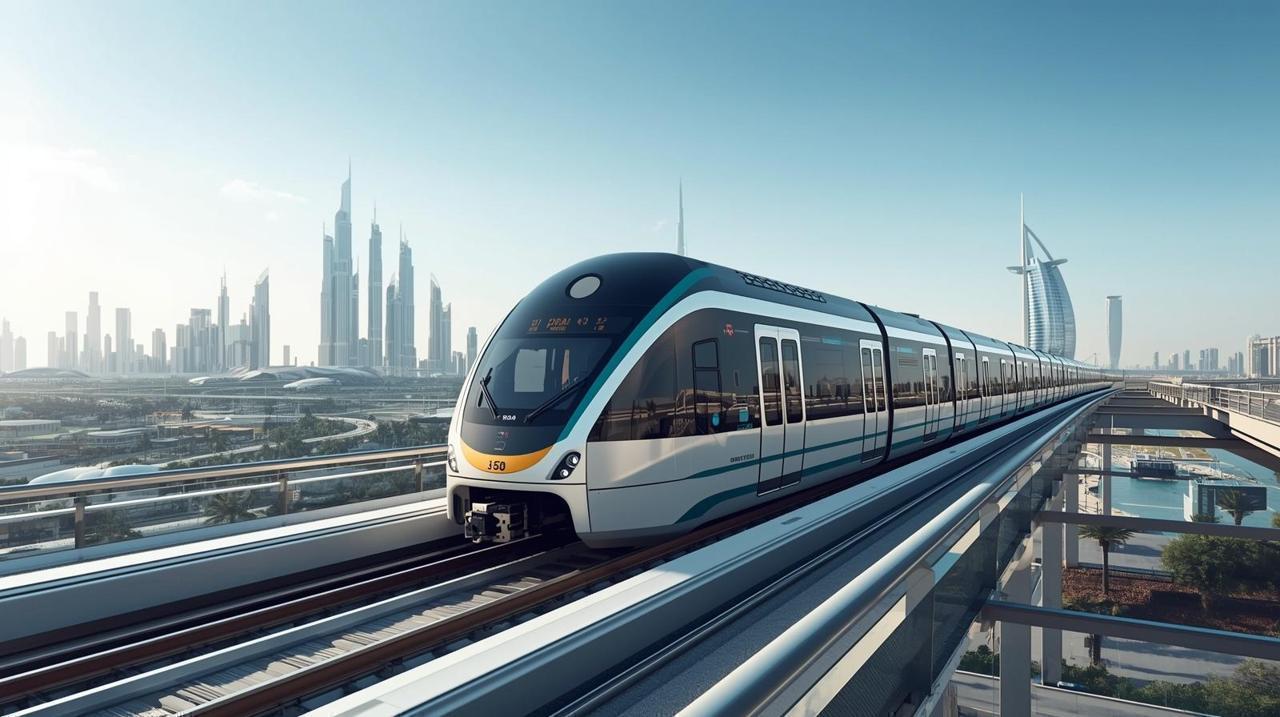
Post by : Avinab Raana
When the Dubai Metro first opened its doors in 2009, it marked the beginning of a new era for urban transportation in the Middle East. Today, more than a decade later, it stands as one of the most advanced, efficient, and sustainable metro systems in the world — a symbol of Dubai’s ambition to become a global smart city.
Beyond being a means of transport, the Dubai Metro has become an icon of progress, redefining mobility, reducing congestion, and setting new benchmarks for technology-driven urban living.
The Dubai Metro wasn’t just a transportation project — it was a strategic step toward smart urban development.
Launched on September 9, 2009 (09/09/09), the Metro was envisioned as part of Dubai’s long-term urban mobility plan. The goal was to create a system that would ease traffic, reduce carbon emissions, and support the city’s growing population and tourism sector.
Today, with over 1.7 million daily riders, the Dubai Metro plays a vital role in shaping Dubai’s sustainable urban ecosystem.
The Dubai Metro is a masterpiece of engineering and design innovation. It is the longest fully automated driverless metro network in the world, recognized by the Guinness World Records.
Two Major Lines:
The Red Line, connecting Rashidiya to Expo City, is the backbone of the network.
The Green Line, linking Etisalat by e& to Creek, complements the Red Line and serves key business and residential areas.
Future Expansion:
The upcoming Blue Line, expected to open by 2029, will further strengthen Dubai’s transport network and enhance connectivity between new residential communities and business districts.
Each station features modern architecture inspired by local heritage, combining aesthetics with comfort and accessibility.
At the heart of the Dubai Metro’s success is cutting-edge technology that ensures safety, reliability, and convenience.
Driverless Operation: Fully automated trains operate with precision, monitored from advanced control centers.
Smart Ticketing: The Nol Card system allows seamless payment across multiple public transport modes, including buses, trams, and marine transport.
Real-Time Data: Passengers benefit from digital information screens, route maps, and AI-based monitoring systems.
Energy Efficiency: Regenerative braking, LED lighting, and advanced ventilation systems help reduce energy consumption.
These innovations make the Dubai Metro a benchmark for smart mobility infrastructure in the region.
The Dubai Metro does more than move people — it connects communities, business hubs, and cultural landmarks.
Key stops such as Burj Khalifa/Dubai Mall, Dubai Marina, Business Bay, and Expo City make it a lifeline for both residents and visitors.
The Metro also integrates seamlessly with other transport systems:
Dubai Tram (for coastal areas)
Public Buses (for local connections)
Water Taxis and Ferries (for marine transport)
Future Hyperloop and EV mobility hubs (under planning)
This integration ensures that Dubai’s transport network operates as a smart, interconnected ecosystem, supporting the city’s 2040 vision.
Dubai’s leadership has made sustainability a cornerstone of its development agenda, and the Metro plays a major role in achieving that goal.
Reduced Emissions: Each journey on the Metro reduces thousands of tons of carbon emissions annually.
Encouraging Public Transit Use: The Metro’s convenience encourages residents to shift away from car dependency, easing traffic congestion and lowering pollution.
Eco-Friendly Infrastructure: Stations use energy-efficient systems, solar power integration, and smart cooling technologies.
This aligns with the Dubai Clean Energy Strategy 2050, which aims to make Dubai one of the world’s greenest cities.
The Dubai Metro has created a positive ripple effect across the city’s economy and lifestyle.
Boosting Real Estate: Properties near Metro stations have seen significant value appreciation.
Supporting Tourism: Easy access to major attractions enhances the visitor experience.
Job Creation: Thousands of jobs have been generated through construction, operations, and technology sectors.
Inclusive Mobility: The Metro ensures accessibility for people of determination, making public transport truly inclusive.
The system’s reliability and affordability have made it an essential part of Dubai’s social and economic fabric.
Dubai isn’t stopping here. The Dubai 2040 Urban Master Plan envisions an even more connected city, with smart mobility corridors, AI-driven transport systems, and electric vehicle integration.
Upcoming innovations include:
Blue Line Metro Expansion (2029)
Flying Taxi Stations (2026)
AI-based traffic management
Sustainable last-mile connectivity via electric scooters and autonomous pods
With these developments, Dubai aims to make 50% of its transport autonomous by 2030, solidifying its position as a global leader in smart city mobility.
The Dubai Metro is much more than a mode of transport — it’s a symbol of vision, efficiency, and innovation. It embodies Dubai’s transformation into a smart, sustainable, and connected city, offering residents and visitors a glimpse into the future of urban mobility.
As new expansions and technologies roll out, one thing remains clear: the Dubai Metro is not just moving people — it’s moving Dubai forward.
#trending #latest










Advances in Aerospace Technology and Commercial Aviation Recovery
Insights into breakthrough aerospace technologies and commercial aviation’s recovery amid 2025 chall

Defense Modernization and Strategic Spending Trends
Explore key trends in global defense modernization and strategic military spending shaping 2025 secu

Tens of Thousands Protest in Serbia on Anniversary of Deadly Roof Collapse
Tens of thousands in Novi Sad mark a year since a deadly station roof collapse that killed 16, prote

Canada PM Carney Apologizes to Trump Over Controversial Reagan Anti-Tariff Ad
Canadian PM Mark Carney apologized to President Trump over an Ontario anti-tariff ad quoting Reagan,

The ad that stirred a hornets nest, and made Canadian PM Carney say sorry to Trump
Canadian PM Mark Carney apologizes to US President Trump after a tariff-related ad causes diplomatic

Bengaluru-Mumbai Superfast Train Approved After 30-Year Wait
Railways approves new superfast train connecting Bengaluru and Mumbai, ending a 30-year demand, easi